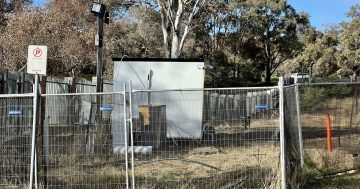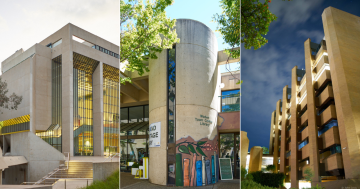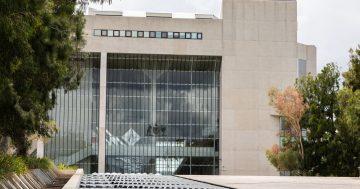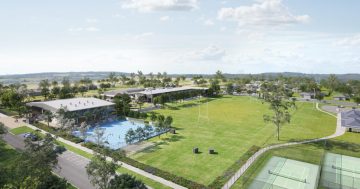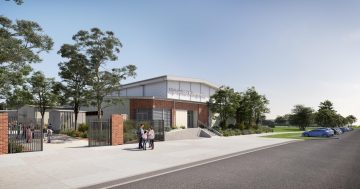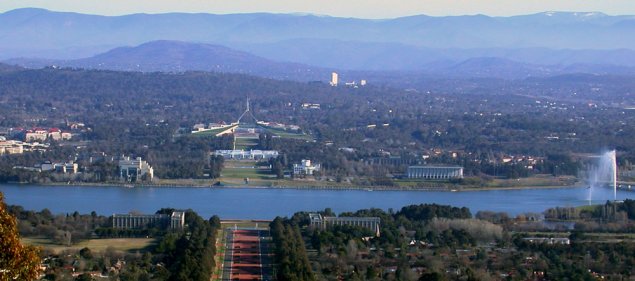
The High Court of Australia, which opened in 1980, is the tallest building on the southern central foreshore of Lake Burley Griffin. Its architectural style, being brutalist concrete and glass, is not exactly friendly.
Looking at the building from the north it is out of proportion with its surroundings. I have long regarded the building as a curiousity of questionable merit. Its construction is more suited to some form of industrial edifice.
The High Court and the National Gallery of Australia (NGA) buildings are architecturally of a similar style and are both situated within well-established landscapes. The NGA’s sculpture garden is a great place to visit even though it is usually overlooked by visitors (more on this is a later post).
Today the NGA is hard to see from the north as the sculpture garden trees have grown very tall. Today as you cross Kings Avenue bridge you can only see the top of the building. The most visible things are the air-conditioning systems on the roof. If they had a large label up there, maybe we could view these as installation artworks.
The two buildings shared another feature— one I am sure the architects and builders do not mention. After they were opened, both buildings suffered from serious water leaks. An enormous amount of money had to be spent on fixing the roof, ceilings and windows on both – along with a very dodgy air conditioning system in the NGA.
Meanwhile the High Court remains a dominant feature on the southern edge of the lake. This building is much taller than the gardens and trees surrounding it — and this is no coincidence.
During its design and construction, the then numero uno of the High Court, Sir Garfield Barwick, had a lot to say about what was to become his head office in the clouds.
It is said that he insisted that his building had to be significantly taller than any others in the vicinity. In particular he made it known that his building had to look down on all the others, in particular the then Parliament House.
This is the reason that this building has such a presence in the parliamentary triangle. It was meant to be that way to ensure that everyone else, particularly those pesky politicians, knew their place in the hierarchy of things.
Looking at the building today, its height does not make sense, until you become aware of the reason that it was someone’s grand sense of self and his power over the decisions for the building.
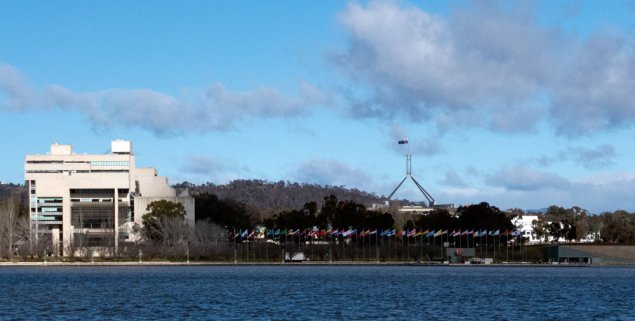
Unfortunately, it did not take too long before the ego of the high court’s chief was outdone by another building in 1988: the new Parliament House. That flag pole above the new parliament building signals who is the real boss in the parliamentary triangle.
Meanwhile we can thank Sir Garfield Barwick for the fact that this not very beautiful and clunky High Court building sits there dominating the skyline on the southern shores of Lake Burley Griffin.
This is part of an occasional series, Canberra Tales, offering short stories, mostly true but including many urban myths, about intriguing aspects of Canberra. As with any story telling, we welcome other variations, accurate or otherwise, to these tales.












